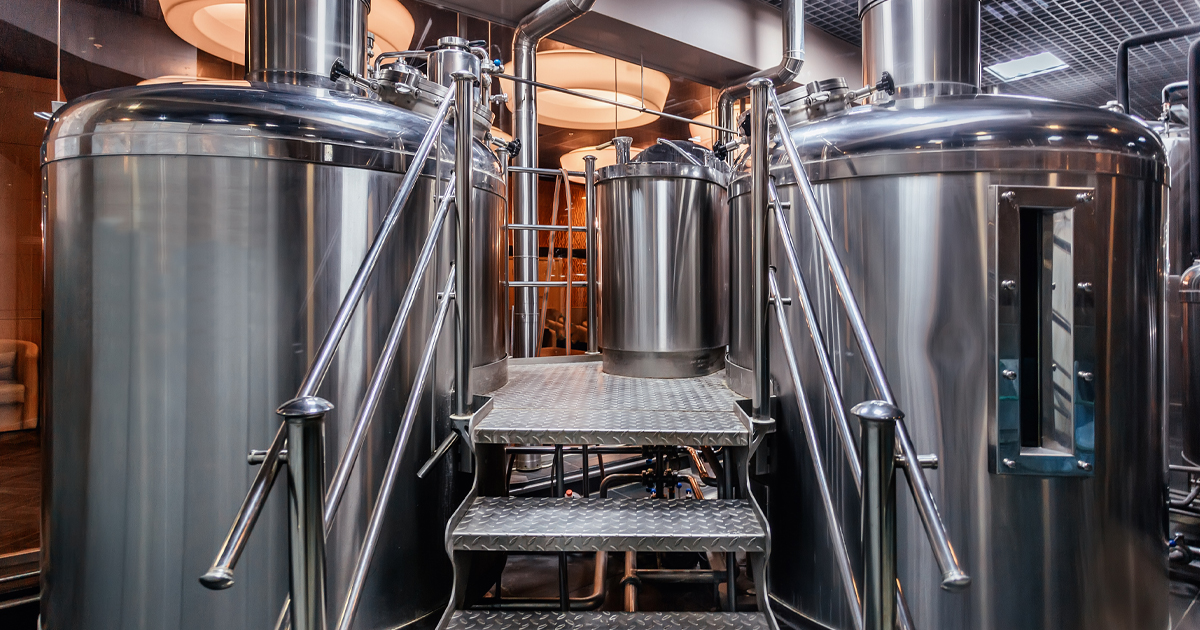Small breweries face many challenges that reinforce their tendency to stay small — one of which is consistency. As with any consumable product, brewers must ensure there’s an accurate audit trail, ingredients are traceable, and that recipe management ensures every batch is the same.
Then, there is the challenge of achieving high enough throughput to yield a profit. According to data from Statistics Canada, a nation that has seen comparable growth to the UK’s craft beer explosion, just 50 per cent of Canadian breweries actually make a profit.
Automation is an obvious option to help small brewers raise their bar. However, unlike the AB InBev’s of the brewing world, most smaller brands cannot invest in expensive digitalization tools — or at least, they aren’t aware of the options accessible to them.
Process control
Brewers taking their first steps into larger volume brewing do not need an all bells and whistles automation tool. Fundamentally, small brewers want to improve operations to a point at which profit becomes inevitable. To achieve this, process control is crucial.
Take the lautering process as an example. Before fermentation begins, the lauter tun is used to separate liquid from spent grain. The vessel continually filters the mash through a bed of malt grist, runs it through a sieve and, in some breweries, rotating blades cut through the grist to loosen it. The ultimate output of this process is the wort, the liquid that determines the taste of the beer — something that must remain consistent to keep quality checkers, buyers and ultimately, beer drinkers happy.
To control this process, digital software can be deployed across equipment to monitor its performance. Providing the software can communicate across several protocols — as are often present in brewing facilities — the operator can keep an eye on the operations of the sieve, blades and peripheral equipment, ensuring there are no discrepancies.
Advantages of automation
COPA-DATA’s zenon for small brewers can make this possible without the hefty investment typically associated with brewing software. The tool allows operators to visualize brewing and know what’s happening at all times. Using this system, they can react to emergencies and prevent errors before they occur. What’s more, this isn’t just possible on a single machine, but can be scaled across the entire brewery to ensure all aspects are controlled effectively, including timings, temperatures, and quantities.
Collecting real-time data not only allows brewers to create a historical record of production, but can also provide a tamper proof audit trail. In zenon, the module known as the Process Recorder allows operators to ‘play back’ a live process and identify errors, enabling them to identify root causes of issues and adjust processes accordingly. The ISA-88 complaint zenon batch module assists small brewers to meet the standards demanded for consistency and quality. These features also support small brewers achieve regulatory compliance, such as the Weights and Measures Regulations.
zenon is already used by many breweries, large and small. However, with many of Britain’s small and micro brewers taking their first steps into automation, how can they ensure investment is low risk, high reward?
Keep it scalable
Automation is met with some tension in the small brewing world. This is somewhat related to the romanticism associated with brewing, but often there’s a misunderstanding of the degree of automation required to improve profitability.
Small breweries needn’t overhaul their existing processes or invest extensively to achieve good results. Instead, software can provide a way for brewers to dip their toes into automation in a scalable way. For instance, this might begin with automating the management of one production line and eventually scale to multi-line, energy management or even vertical integration with other areas of a facility, such as enterprise systems.
Like small breweries themselves, software for brewing processes should be able to expand and develop over time. However, to enable growth from the 15,000th barrel to the 150,000th — and to compete with the other 2,414 small and microbreweries in the UK — beginning the journey into automation is key.

